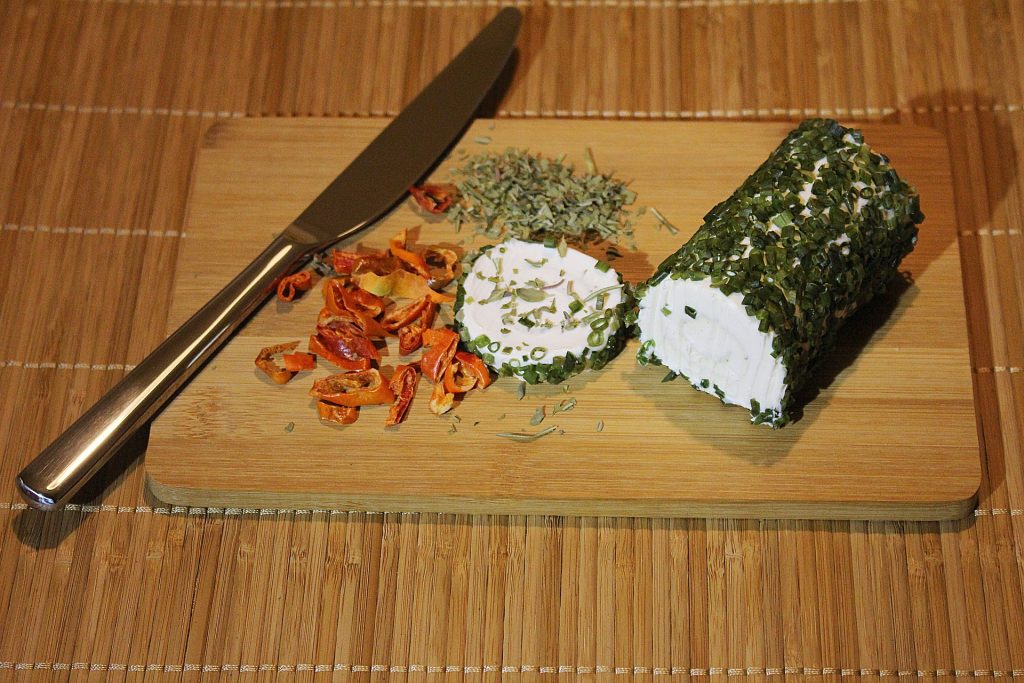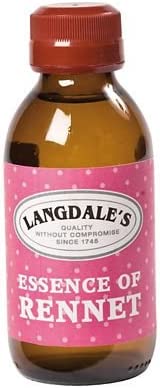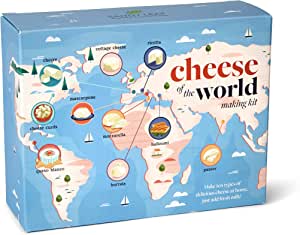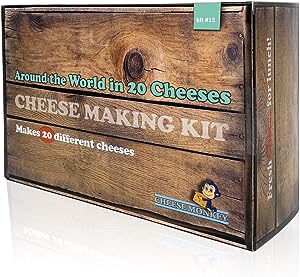Goat cheese is both creamy and delicious, offering a delightful culinary experience. There’s something incredibly satisfying about crafting your own cheese from scratch. Cheese making can be time-consuming, but here’s a no rennet goat cheese recipe that will have you enjoying its delectable flavours in no time. Let’s dive into the simple yet rewarding process of creating homemade goat cheese that will surely leave you yearning for more.

Cheese making has been a cherished tradition for thousands of years, allowing us to transform milk into a portable and incredibly delicious source of nourishment. It is truly remarkable how this ancient practice has enabled us to create a versatile and flavorsome food item that has stood the test of time.
How to Make Goat’s Cheese at home
When it comes to cheese making, the internet and books offer a wide array of recipes to choose from. However, if you’re new to cheese making, no rennet cheese recipes are your best bet for simplicity and ease. These recipes eliminate the need for rennet, a common ingredient used in traditional cheese making, making them an ideal choice for beginners. By opting for no rennet cheese recipes, you can embark on your cheese making journey with confidence and enjoy the process without any unnecessary complexity.
To achieve the best-flavored cheese, fresh, unpasteurised goat’s milk is the way to go. By using this high-quality ingredient, you can create homemade cheese that surpasses anything you can find at the supermarket in terms of both quality and flavor.
The fundamental components for making any type of cheese are relatively simple: milk, salt, and a curdling agent such as rennet or citric acid, like lemon juice. These essential ingredients work together to curdle the liquid, forming the foundation for cheese production.
With these basic elements and a little know-how, you’ll be well on your way to creating your own delicious, artisanal cheeses right at home.
Read on for a soft, no rennet goat cheese recipe that is simple to make at home in your kitchen. But first of all…
What is Rennet?
Rennet, available in both liquid and powdered form, plays a crucial role in the cheese-making process. It works by curdling the milk and aiding in the setting and firming of the cheese. Traditional rennet is derived from the stomachs of young animals, like calves, and contains enzymes that assist them in digesting their mother’s milk.
This natural enzyme is responsible for transforming the liquid milk into a solid curd, the essential building block for cheese. While traditional animal rennet has been widely used throughout history, there are also vegetarian and microbial alternatives available for those who prefer non-animal-based options.
Vegetarian rennet is also commercially available and is made from a type of mould. It works in the same way as animal rennet. Only a small amount is required to start the curdling process.
When it comes to making harder cheeses, using some form of rennet is usually required. However, when crafting soft cheeses, there is room for flexibility. In the case of making soft cheeses, such as goat cheese, rennet can be substituted with common ingredients like lemon juice or white vinegar.
No rennet goat cheese recipes provide a simple way to create a fresh and flavourful soft cheese. This homemade delight can be used in a multitude of dishes, adding a delightful touch to salads, spreads, or even enjoyed on its own. So, whether you’re a beginner or simply seeking an alternative method, trying your hand at no rennet goat cheese is an excellent choice that will bring homemade goodness to your culinary adventures.
Cheese Making Equipment
Maintaining clean equipment is of utmost importance in any cheese making process, as bacteria plays a crucial role in the transformation of milk into cheese. Before embarking on your cheese making journey, be sure to thoroughly clean all your equipment.
Start by washing your utensils, containers, and any other tools with hot, soapy water. Rinse them thoroughly to remove all traces of soap. To further ensure cleanliness, you can sanitise your equipment by soaking it in a sanitising solution or using a food-grade sanitiser. This step helps eliminate any potential harmful bacteria that may interfere with the cheese-making process.
By prioritising cleanliness and maintaining hygienic conditions throughout, you set the stage for successful cheese making and ensure the production of safe and delicious cheeses.
To make goat cheese, you will need:
- Enamel or stainless steel cooking pot (plenty large enough for the volume of milk). Do not use cast iron cooking pots or copper as it can affect the colour and flavour of the cheese.
- Spatula
- Dairy Thermometer
- Colander
- Several cheesecloths or muslin cloths
- Draining Rack
No Rennet Goat Cheese Recipe
This basic recipe is a great starting point and you can use either lemon juice, white vinegar or rennet to curdle the milk.
Ingredients:
- 4 pints of fresh, unpasteurised goat’s milk
- ½ tablespoon of sea salt
- The juice of 2 lemons
Method:
1. Pour the goat’s milk into your pot and place on a medium heat on the hob. Warm the milk until it reaches 185 F, checking it with your thermometer.
2. Remove from the heat and add the lemon juice and stir until the milk has curdled, separating itself into curds and whey. This process may take a few minutes, and if it seems slow to change, simply add some more lemon juice to encourage the process.
3. Place your cheesecloth inside a colander and then ladle in the curds from the liquid. Use two or three cloths in layers to help prevent losing any of your cheese by it draining through too quickly.
4. Once you have enough, wrap the cheese and tie the four corners at the top of the cheesecloth. Hang up somewhere cool, ideally a refrigerator, for a few hours to let the rest of the liquid drain away. Put a bowl underneath to catch the excess liquid.
5. When it has become a soft, spreadable consistency, it is ready to eat. Add the salt to taste.
For a firm, crumbly goat’s cheese, allow a longer time for the whey to drain. The consistency is up to your own preference! If you find that your cheese has become too firm, then you can add a little of the whey back into it to soften.
There’s your basic no rennet goat cheese, all ready to eat! But, if you want to add other flavourings to your cheese, then now is the time to do it.
Why not make goat’s cheese with chives, garlic or even chilli pepper? Or how about using dried produce such as apricot pieces or walnut? Experiment and come up with a taste sensation of your own!
Home Cheese Making Kits
If you are serious about making your own cheeses from scratch, an easy way to begin is by using a cheese making kit. These can be used to make goats cheese, or other cheeses from cow’s milk.
Here are just some examples:
Prices differ, but you can check the latest prices for cheese making kits on Amazon.
Cheese making kits are also great gift ideas for anyone who loves cooking, or is a huge fan of artisan cheeses! Or, why not make different flavoured cheeses to give as handmade gifts for Christmas, birthdays and other celebrations?
Why Make Your Own Cheese?
With so many sorts of cheese available in supermarkets and deli shops, you may wonder ‘why go to all the bother of making cheese from scratch. There are lots of benefits of making homemade cheese.
- You choose the ingredients – when you buy a block of cheese from the shelf, do you know where the milk has come from? Where flavourings have been sourced? When you make cheese at home, from scratch or using a cheese making kit, you have control over what you put in it.
- Stronger connection with the food you eat – when you have personally sourced the finest ingredients for your homemade cheese, you appreciate the time and effort that is involved in creating those ingredients, and the time and effort put into producing the final result.
Cheese making is a fun activity that you can even children will enjoy doing. So grab you apron, fetch you milk and get curdling!
Do you make goat’s cheese? Or, do you prefer to make cheese from cow’s milk? Share your tips and recipes in the comments.



